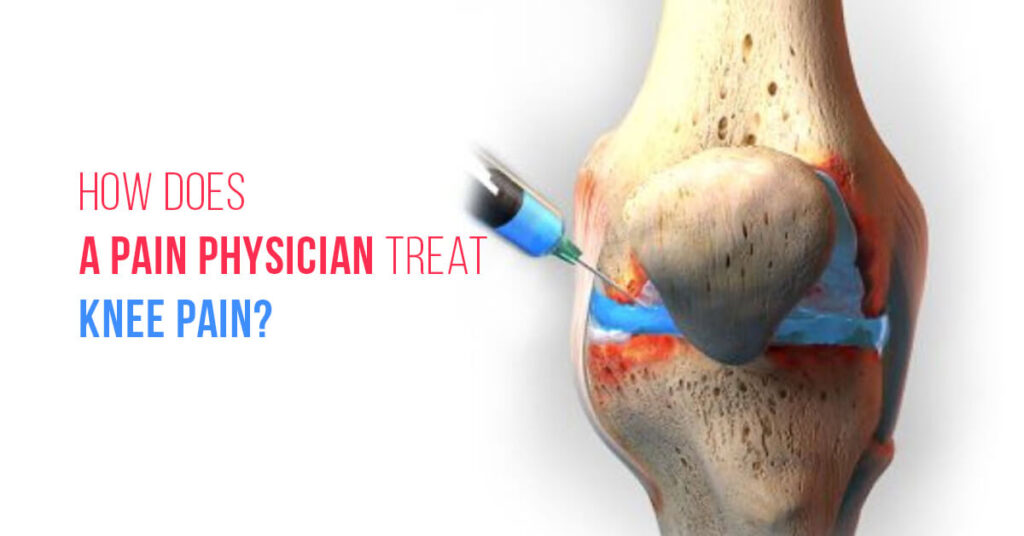A pain physician, also known as a pain management specialist or interventional pain physician, employs a comprehensive and multidisciplinary approach to treat knee pain. Their goal is to address the underlying causes of the pain and improve the patient’s overall quality of life. Here are some common strategies a pain physician may use to treat knee pain:
Thorough Evaluation:
The first step in treating knee pain is a thorough evaluation of the patient’s medical history, symptoms, and a physical examination. The pain physician may also order imaging studies, such as X-rays or MRIs, to get a detailed view of the knee joint and identify any structural issues.
Medication Management:
Pain physicians may use medications to manage knee pain. This can include nonsteroidal anti-inflammatory drugs (NSAIDs) to reduce inflammation and alleviate pain, analgesics for pain relief, and, in some cases, medications to address underlying conditions contributing to knee pain.
Physical Therapy:
Physical therapy is a cornerstone of knee pain management. A pain physician may collaborate with physical therapists to design a tailored exercise program focused on strengthening the muscles around the knee, improving flexibility, and enhancing joint stability. Physical therapy can also include modalities such as ultrasound or electrical stimulation.
Joint Injections:
Pain physicians often use injections to deliver medications directly into the knee joint for targeted relief. Corticosteroid injections can help reduce inflammation, and hyaluronic acid injections may improve lubrication within the joint for those with osteoarthritis.
Platelet-Rich Plasma (PRP) Therapy:
PRP therapy involves drawing a small amount of the patient’s blood, processing it to concentrate platelets, and injecting the PRP into the knee joint. Platelets contain growth factors that can stimulate tissue repair and reduce inflammation, potentially promoting healing in the knee.
Viscosupplementation:
For individuals with osteoarthritis, pain physicians may recommend viscosupplementation. This involves injecting a gel-like substance, such as hyaluronic acid, into the knee joint to improve its lubrication and reduce friction, thereby alleviating pain and improving mobility.
Radiofrequency Ablation:
In cases where knee pain is attributed to nerve-related issues, a pain physician may use radiofrequency ablation. This procedure involves using heat to interrupt nerve signals, providing long-term pain relief. It is often used for conditions like chronic knee pain due to arthritis.
Lifestyle Modifications:
Pain physicians work with patients to identify and address factors that contribute to knee pain, including lifestyle factors. This may involve weight management, exercise modification, and recommendations for activities that are gentle on the knees.
Bracing and Orthotics:
Pain physicians may prescribe knee braces or orthotic devices to provide support, stabilize the joint, and reduce strain. These supportive devices can be particularly beneficial for conditions like ligament injuries or instability.
Counseling and Education:
Pain physicians play a crucial role in educating patients about their condition, treatment options, and self-management strategies. They may provide counseling on pain coping mechanisms, stress reduction techniques, and lifestyle adjustments to empower patients in managing their knee pain.
Surgical Consultation:
In cases where non-invasive treatments are not effective, pain physicians may collaborate with orthopedic surgeons for a surgical consultation. While they specialize in non-surgical interventions, pain physicians work closely with other specialists to ensure a comprehensive and coordinated approach to patient care.
It’s important to note that the specific approach to treating knee pain may vary based on the underlying cause and the individual patient’s condition. A pain physician tailors the treatment plan to address the unique needs and goals of each patient, aiming to provide effective pain relief and improve overall knee function.


